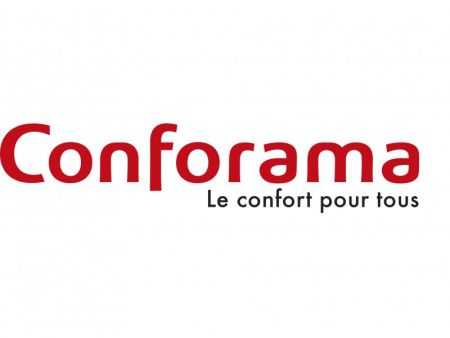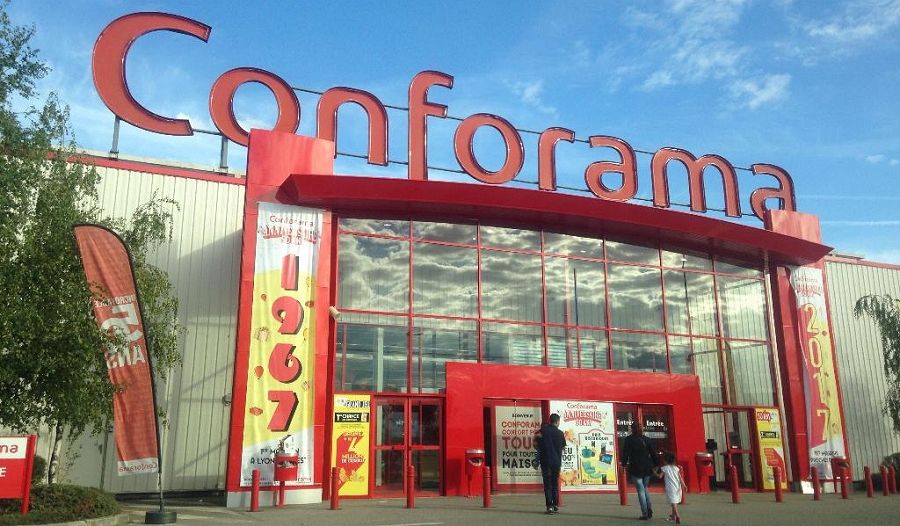WHY CONFORAMA'S TERMINATION PLAN IS A SCANDAL |
|
|
To these job cuts, we must add the 100 provided in the Stores Deposits. The employees of Conforma are stunned. However, at the beginning of March 2019 Conforama's unions had expressed their concerns about the future of the brand. In January 2018, the group sold 17% of its stake in Showroom to Carrefour. Private, n ° 2 of destocking online, thus collecting 78.5M euros. Since the beginning of 2018, Conforama has had an ad hoc mandate from a judicial administrator, after posting historical losses in 2017. But how did Conforama get there? Small history: Conforama was born in 1967 in the outbuildings of an old farm in the suburbs of Lyon, thanks to the meeting of a furniture retailer in the North with a Bordeaux furniture manufacturer and researchers of computer savvy discount formulas. Since the sign passed into the hands of the Agache Willot Group, Bernard Arnault, François Pinault Printemps La Redoute which in 2011 sold it to Steinhoff International for the sum of 1.2 billion euros. The Steinhoff Group is based in South Africa where it has been headquartered since 1997. It is by Markus Jooste that the scandal has arrived in recent months, a scandal of which he is in fact held for the direct manager following accounting frauds and embezzlements estimated at 6.5 billion euros by the audit firm Pricewaterhouse -Cojers (PwC) after an audit. Judicial proceedings have been initiated by the Steinhoff Group which is seeking to recover $ 59 million of undue remuneration paid to its former General Manager, Markus Jooste.
Even though Markus Jooste, who resigned at the end of 2017, is the subject of open court proceedings, the impenetrable methods of the Steinhoff Group, a heavyweight in furniture (the second largest group after IKEA) have remained the same since the beginning. "It's a quiet group, not show off for two cents," says Yves Marin, a distribution specialist at Kurt Salmon. "They are makers and not speakers," he adds, unlike an IKEA. The evidence, no one yet knows why, the group, initially established in Lower Saxony decided to install its headquarters in South Africa. We only know that Bruno Steinhoff, its founder, non-executive director of the Group since 2008 arrived in South Africa in 1997 after taking a 35% stake in the GommaGomma Group. Gomagomma has retained the name of the German group (Steinhoff) and Markus Jooste will take over the executive functions that he will retain until 2017, well beyond (after 2008) the withdrawal of Bruno Steinhoff. Although the furniture market has become detestable year after year, the Steinhoff Group is showing a binge of purchases in Europe and the United States, purchases not always successful from 2011 to 2017. Between bulimia and embezzlement we understand better why the Group Steinhoff and the French brand Conforama Group, purchased in 2011 today faces serious financial difficulties. What we understand less, that is why in December 2017, the ECB (European Central Bank which Christine Lagarde should take the direction at the end of October 2019) has benefited "in loosdé" the Group Steinhoff of a colossal aid, via the Central Bank of Finland (the country is part of the EU and is in the euro zone) representing around 900,000 shares listed on the stock exchange at 0 (or very close to zero). The stock today is worth between 0.60 and 0.80 euro! The operation, which was not denounced by any MEP, scandalized several bodies of the Financial Press including our excellent colleague Pierre Jovanovic. (See his press review at the end of December 2017). Asked on the subject, Mario Draghi, (President of the ECB and former Goldman Sachs) justified the operation by indicating that it launched it to boost inflation and growth. Given the evolution of the stock market value of Steinhoff, the desired goal (?) Was missed. As a result, the ECB recorded serious financial losses on this transaction. The Steinhoff case has been coughed internally by the ECB and by its detractors who have never accepted that risks related to private companies are transferred to the public (the ECB is financed with the money of the people). The second question, and not the least one that has been asked and which has remained asked, is why the ECB has invested in a private interest transaction ... of South African origin! Is South Africa in Europe ??? A few months later the ECB sold out the Steinhoff file; but the question that remains always and still asked is why such a financial commitment when in December 2017, Steinhoff had a operating deficit of $ 4 billion. What are the links between this unfortunate decision and the fact that Rothschild Bank has been dealing for many months with Steinhoff's recovery? Finally, to finish, one will recall this maxim of Honoré de Balzac: "There are two stories:" the official history and the secret history where are the real causes of the events ". |
|
| Clara Mitchell for DayNewsWorld | |
 |
|





